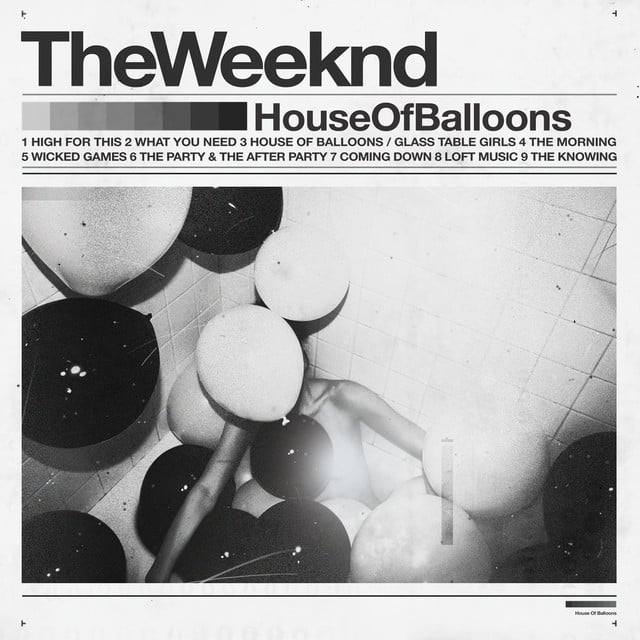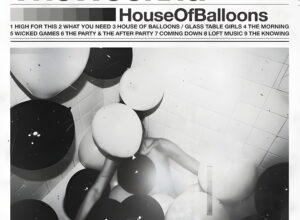Released: 2011
“House Of Balloons / Glass Table Girls – Original” by The Weeknd is a dualistic track that deals with the toxic allure of hedonism with the stark reality that lurks beneath the surface. This haunting and addictive anthem probes deep into the heart of the so-called ‘happy house’, a place of fleeting pleasure and prolonged suffering. This 6-minute musical voyage tackles themes of desire, addiction, and the bittersweet essence of living life on the edge.
The first half of the track, “House of Balloons,” revolves around the seductive world of hedonistic excess. The Weeknd hypnotically coos over dark synths, inviting the subject of the song to stay, to succumb to the allure of his world, where the pain seems to eclipse. The recurring phrase “This is a happy house” paints a picture of an intoxicating environment meant to entice and lure. However, there’s a certain irony embedded within, as we know that such a lifestyle invariably comes with a hefty price.
The Weeknd’s term “a happy house” is a chilling euphemism for a place of substance-fueled debauchery and distraction, a far cry from traditional notions of happiness. There’s also a fascinating line, “your mind wants to leave, but you can’t go” – underlining the addictive nature of this world, the struggle to walk away even when you’re acutely aware of its detrimental impact.

As the song transitions into the second half, “Glass Table Girls,” we delve deeper into the realm of substance abuse and its harrowing consequences. The repeated phrase “Bring the 707 out” refers to the Boeing 707, an analogy for taking a trip or getting high. It’s a trenchant reminder of the ever-present escapism in The Weeknd’s music.
Lines like “Two puffs for the lady who be down for that” and “With a handful of pills, no chasers” evoke the reckless abandon of drug use. The Weeknd isn’t glamorizing this, but rather highlighting the raw and sometimes bleak reality of this lifestyle.
There’s a distinctly dark undertone to his verses in “Glass Table Girls.” He sings of ‘superstar lines’ and ‘sex in a handbag’, hinting at a life where fame and narcotics inseparably intertwine. This is accompanied by an assertive edge, a byproduct of self-awareness and an unfaltering acceptance of his life choices.
The Weeknd then launches into a harrowing exposition of the entwining of sex and drugs, where there “ain’t no closed doors” and he can “listen to her moans echo.” It’s a stark portrayal of intimacy stripped down to its rawest form, influenced and corrupted by substance indulgence.
The repeated phrase “I’m so gone, so gone. Bring out the glass tables” paints a vivid picture of The Weeknd lost in the throes of substance use. It’s a chilling refrain that underscores the exhausting and destructive cycle the protagonist willingly treads.
Finally, the repetition of “Bring the 707 out” towards the end of the song with the recurring “La, la, la” paints the image not only of a cyclical pattern of delusions and addiction but also a conscious, prominent aspect of this lifestyle.
In conclusion, “House Of Balloons / Glass Table Girls” is a feverish exploration of excess, addiction, and the dangerous allure of hedonistic living. The Weeknd doesn’t shy away from painting a stark picture of a lifestyle that, from afar, may seem alluring but is ultimately destructive and self-consuming. It’s yet another masterful demonstration of The Weeknd’s genius – a gritty, intense, and poignant narrative built upon a sonic foundation that’s as addictive as the life it depicts.








